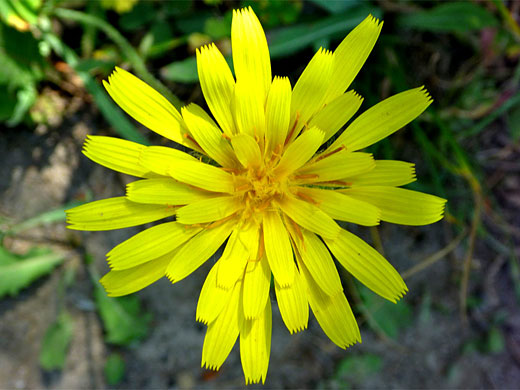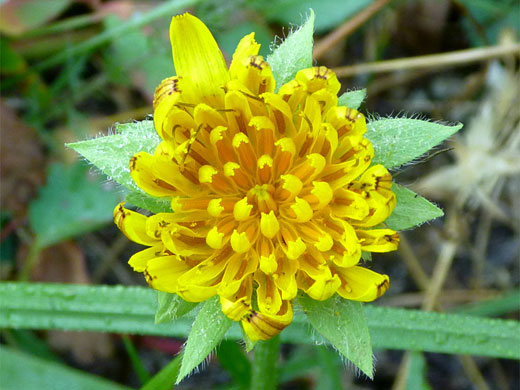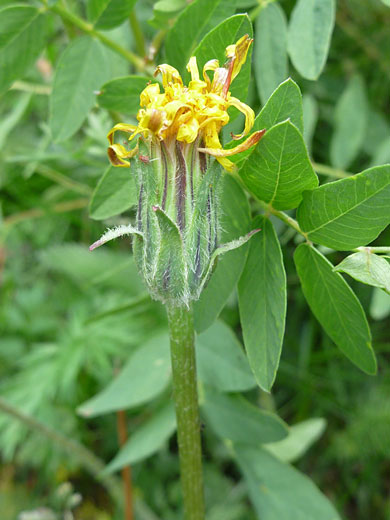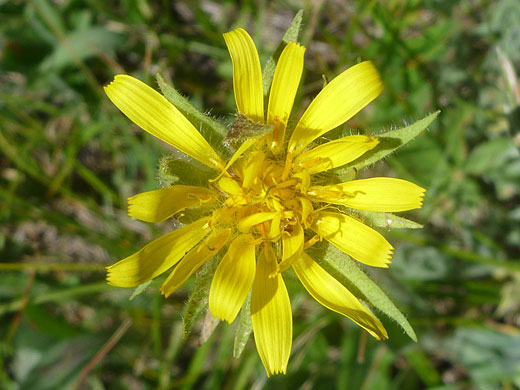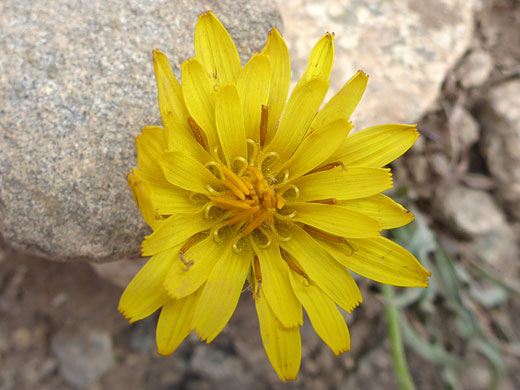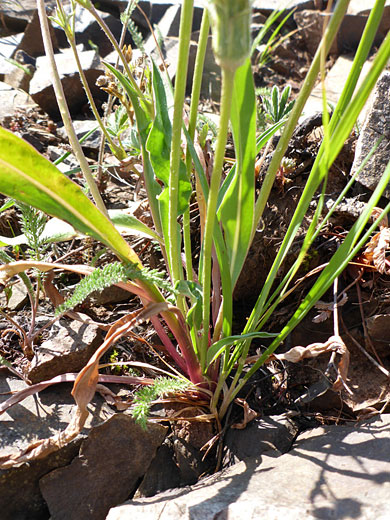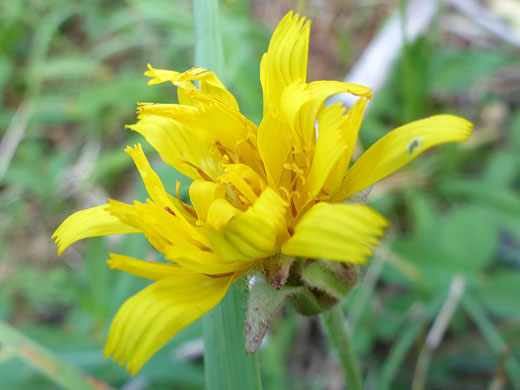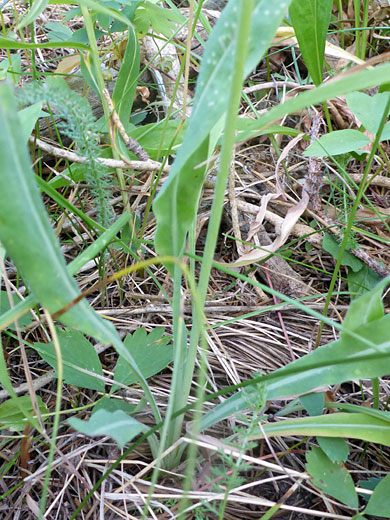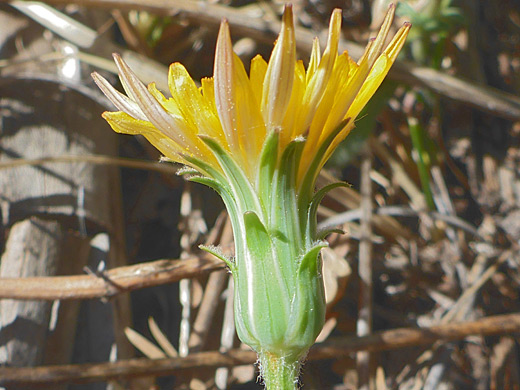Common names:
Pale agoseris, short-beaked agoseris, prairie agosis
Family:
Scientific name:
Agoseris glauca
Main flower color:
Range:
Most of western USA; not desert or coastal areas
Height:
4 to 28 inches
Habitat:
Sagebrush plains, grassy forest clearings, mountain meadows; up to 11,800 feet
Leaves:
Long (a foot or more), thin and narrow, growing from the base; bluish-green in color
Season:
May to September
The pale agoseris, agoseris glauca, produces single yellow flower heads over an inch in diameter, composed solely of ray florets, at the top of a long, thin, green stalk lacking any leaves. When the florets are fully extended the plant resembles a dandelion, but is distinguished, amongst other factors, by its longer stem. The rays have finely toothed tips and thin, lengthways ridges. Florets vary in number from 15 to 150; they may overlap multiple times, or be largely separate from each other. Brownish stamens also radiate from the center.
Beneath the flowerhead are two or three overlapping rows of pointed, sparsely hairy (occasionally glandular) phyllaries which curl back somewhat. Phyllaries are mostly green but usually have a purple band up the center, and a purple tip. Phyllaries are slightly different in length.
This and other agoseris species are known as false dandelions. There are two varieties. Var glauca has greyish-green leaves with straight margins, and (usually) hairless leaves and phyllaries, while the higher elevation var dasycephala has darker green leaves with wavy margins, and hairs on leaves and phyllaries.
Beneath the flowerhead are two or three overlapping rows of pointed, sparsely hairy (occasionally glandular) phyllaries which curl back somewhat. Phyllaries are mostly green but usually have a purple band up the center, and a purple tip. Phyllaries are slightly different in length.
This and other agoseris species are known as false dandelions. There are two varieties. Var glauca has greyish-green leaves with straight margins, and (usually) hairless leaves and phyllaries, while the higher elevation var dasycephala has darker green leaves with wavy margins, and hairs on leaves and phyllaries.
All Contents © Copyright The American Southwest | Comments and Questions | Contribute | Site Map


